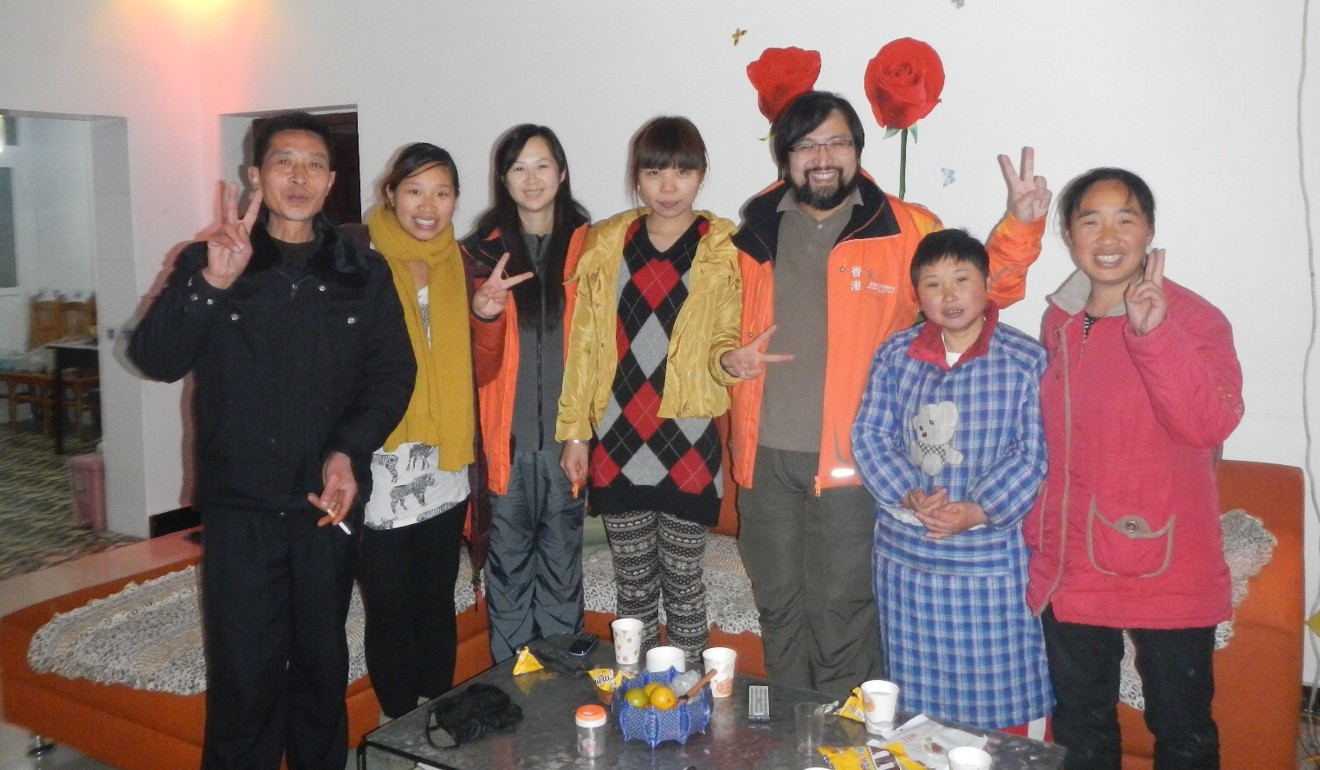
2008 Sichuan earthquake still fresh in minds of Hong Kong volunteers 10 years later
Timothy To Wing-ching’s life would change forever after he travelled to the devastated province with a group of counsellors to help victims
A young girl was sobbing uncontrollably when Timothy To Wing-ching spotted her inside a Chinese military camp set up for victims of the deadly 2008 Sichuan earthquake.
The Hongkonger and his group of 12 other counselling professionals had arrived in Wenchuan county about two weeks after the magnitude 8 earthquake devastated Sichuan, killing more than 80,000 people, injuring 370,000 and leaving 4.8 million people homeless.
Hong Kong volunteers head for Sichuan quake zone to provide counselling
Ten years later, To, now 46, remembered how he thought at the time he would be like “superman”, flying into the quake-stricken province like a superhero to help victims just when they needed it the most.
But that fantasy, he said, was short-lived.

“We were watching the news in Sichuan one day and the report was about how the children victims didn’t have shoes and backpacks. The next morning, we went to a market and bought some shoes and bags. We then went to a camp to distribute the items,” he said.
When they arrived at the camp, they saw about 40 children, aged five to six, including the little girl who was crying her heart out while eating.
Sichuan earthquake, 10 years on: how a tragedy changed China
“I came to her and offered her a pair of shoes and a bag. She pushed me away. I gently touched her on her head and asked, ‘What do you need?’ She replied she needed her father and mother,” To said.
The exchange with the girl would haunt him.
“At that moment, I felt like I was not the superman I had expected to be. I dreamt about her so many times afterwards. That prompted me to think about what I should do to actually help them.”
Anger over Sichuan earthquake-themed model photo shoot
To later founded the Post Crisis Counselling Network in Hong Kong and has been offering free counselling to the victims there ever since.
To was one of the Hong Kong volunteers who flocked to Sichuan after the disaster, which saw particularly heavy casualties because of the “tofu” buildings – shoddily built facilities with insufficient reinforcement and substandard concrete – that collapsed easily.
Hong Kong’s lawmakers have approved HK$9 billion (US$1.15 billion) since 2008 to help Sichuan rebuild. The money has been spent on about 190 projects, including the construction of schools, roads and hospitals.
Money from the city has also been used to open a panda park with 55 pandas at the Wolong National Nature Reserve, which was destroyed in 2008.

The Post Crisis Counselling Network recently polled 5,000 Sichuan earthquake victims to look at how well they recovered from the trauma. On a scale of one to 10, the respondents’ satisfaction with their lives averaged a nine, indicating that were content with their living conditions.
Sichuan earthquake: grieving parents still clinging to a premier's promise, unfulfilled
But the results also showed that their mental health averaged just a five.
To said the results suggested many victims had not walked out of the shadow of the quake and were worried about possible future earthquakes.
“Resources have poured into Sichuan and there are so many motorways there now,” he said. “But not a lot of effort has been made to help them recover mentally.”
Meanwhile, Sichuan University, in collaboration with Hong Kong Polytechnic University, set up China’s first institute for disaster management and reconstruction in May 2013. It hosts advanced laboratories for physiotherapy, occupational therapy, prosthetics and orthotics, and disaster nursing, as well as an information resource centre to provide public education.
How China’s ‘Coke Boy’ became the real thing 10 years after surviving deadly Sichuan earthquake
Jin Xiaodong, from the West China Hospital of Sichuan University, said an area of the campus had been used to house a mobile field hospital, where emergency professionals set up tents and stored other equipment such as foldable X-ray machines.
The equipment can be moved to a disaster anywhere in the world between 48 and 72 hours by plane.
Di Baofeng, associate dean of the disaster management institute, described the mobile hospital as a crucial training base.
“Our institute is very multidisciplinary, and we have explored a lot of these disaster management fields,” he said. “Through data and simulations, we are able to better understand which areas are at greater risk of disaster, which supports urban planning.”


